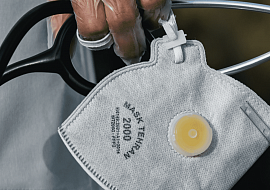From Preventive to IoT Predictive Maintenance. Transforming Service Approach
With the advent of the Internet of Things, predictive maintenance (PdM) has become much more beneficial, and affordable, and has rapidly moved into the buzzword category. Continuous real-time condition monitoring and predictive analytics have allowed enterprises to avoid budget-sensitive downtimes and, in general, to revolutionize their asset management. In just about 5 years, enterprise IoT solutions have made it possible to build a new evolutionary model for physical assets maintenance, where IoT Predictive Maintenance can be considered as the next step after Condition-based Maintenance (CBM), which is also based on condition monitoring. Soon, we can expect the assets to become more intellectual and independent, requiring minimal human intervention to carry out predictive maintenance.
Whether you are about to implement IoT Predictive Maintenance or consider an alternative IoT-based advanced service strategy, you are already on the way to the future. So, if you have decided to enhance your asset management with the help of Predictive Maintenance, or you are doubting whether it is valuable for your business, you’ve come to the right place.
The Difference Between Condition-based Maintenance and IoT Predictive Maintenance
Both CBM and predictive maintenance practices are based on condition monitoring, which can be conducted in various modes. For those who are new to the concept, IoT condition monitoring involves the real-time collection of data from operating equipment, which indicates its working condition. The parameters are selected for specific machinery, for example, vibration, temperature, liquid level, etc.
If you have already implemented IoT-based equipment condition monitoring, then you are probably utilizing at least the Condition-based Maintenance practice. The transition to IoT Predictive Maintenance involves the deployment of a more complex infrastructure with cloud analytics and continuous data allocation. The main difference between these practices is revealed in the opportunities they offer:

Both practices involve the use of IoT software platforms for data management. In their simplest execution, they involve the delivery of data, analytics (in the case of predictive maintenance), creation of reports, and providing alarms. Such software can be integrated with various modules of ERP or CMMS systems, allowing automatic assignment of employees or automatic maintenance planning, inventory management, automatic ordering of spare parts and so on. This is how assets begin to take care of themselves!
Where IoT predictive maintenance is used
IoT Predictive Maintenance can be a key piece of the puzzle called asset management. However, it is not universal. As practice shows, IoT Predictive maintenance is beneficial for industries where downtime is critical, maximum availability of assets is required, and the cost of repairs is extremely high. Most of all, this applies to manufacturing, energy, oil, and aviation. Logistics and transport are also particularly affected by unplanned downtime, as assets are connected in a large network, and downtime can affect the entire chain. As for safety-critical equipment, for example, serving the rail industry, failure can cause critical consequences.
Typically, IoT monitoring is applied to mission-critical equipment, complex dynamic machinery, and its crucial and most fragile components, such as rotating parts, combustion equipment, engines, and pumps. They are predisposed to wear down faster, and their damage has long-term consequences. Also, predictive maintenance can be considered when failures are predictable and understandable, while the chance of false positives is minimal or it’s very inexpensive.
In non-critical cases, the enterprise can be limited to Condition-based Maintenance. But this practice requires a well-thought-out maintenance schedule to succeed. Also, CBM can be a good start if you implement predictive maintenance in the future since not every company is ready to invest a significant amount of money there while their databases can be incomplete.
Having maximum valuable data, you can create a plan on how to carry out IoT predictive maintenance with minimal impact on production and minimal operating costs. We’ve already discussed how to calculate savings from PdM, so you can explore this article for more details.
How to Establish Robust IoT Predictive Maintenance
Let's say that you already analyzed all the empirical data on equipment maintenance and set clear business goals on how to optimize it. Now for the small step which is to set up a technological basis for the PdM, namely, condition monitoring and predictive analytics.
Implementation of Condition Monitoring for IoT Predictive Maintenance
After identifying the equipment components that require special attention, you will immediately understand what data you should collect and how. To understand this, you need to dig deeper into the history of failures, identifying functional failures, types of failures, and investment in machine repair.
For now, any parameter can be monitored automatically, from the vibration of the compressor to pump pressure and acid level in a tank. Therefore, the implementation of smart sensors won’t be a difficult stage. It might also be worth considering multi-sensors that allow the tracking of several parameters at the same time. This may be justified in the case of complex equipment or a high probability of false alarms.
When collecting data to be deeply analyzed, it is necessary to provide the following conditions:
- The infrastructure supports big data streams. Infrastructure with edge components, such as IoT gateways, is recommended to reduce the load and competently distribute data flows over the network.
- High-quality data. Minimize noise that can distort the data collected from the equipment. For further analytics, it’s recommended to clear, aggregate, and filter data, which can also be performed at the edge.
- Continuous data collection. There should be a lot of data to execute the perfect predictive analysis. Accordingly, data should be collected continuously.
- Accessibility. Analyze the need to collect data from hard-to-reach areas to select the appropriate wireless communication protocols and network topology. For example, within a mesh network, data easily overcome obstacles such as walls and tunnels.
- Durability. The need to collect data from vibrating or moving equipment requires special attention to data collection hardware. It is advisable for PCBs of such equipment to be protected from vibrations and strikes.
In general, IoT Predictive Maintenance is recommended for components of the machinery rather than complete systems to achieve the greatest cost-effectiveness. However, it all depends on the goals you have set.
Need Help?
Implementing predictive analytics for IoT predictive maintenance
AI-based predictive analytics is a key part of delivering the value of IoT Predictive Maintenance, given that you have established a perfect data collection. When developing an analytical component for a predictive maintenance solution, the main task is to set up the most effective combination of predictive analytics models and the collected data. This requires a complete view of the maintenance processes of your enterprise.
IoT predictive maintenance assumes that equipment loses efficiency over time. Thus, AI uses data to determine patterns of aging equipment, as well as pinpoint the causes that contribute to it. To perform it as accurately as possible, it is necessary to study the patterns of failures based on data provided over the longest possible period. To properly program an automated maintenance tool, you need to understand the historical trends leading to failures. The following data is most relevant to build a model for predictive analysis:

With complete and high-quality initial data, you have every chance to build an algorithm that will accurately predict how long the machine will still work before a failure occurs. This also minimizes false positives and negative results. Having such a powerful tool, you can revolutionize maintenance, automate processes, and manage working tasks, and inventory.
Summing Up for IoT predictive maintenance
- Today, IoT Predictive Maintenance can be considered the highest stage of the evolution of physical asset maintenance allowing for efficient optimization of maintenance costs. However, it does not suit every business.
- Predictive maintenance is recommended to be considered when the downtime is critical, and its consequences are significant. It is usually applied to safety-critical and mission-critical equipment, complex dynamic machinery, and its dynamic parts.
- Start implementing IOT predictive maintenance only after a precise analysis of your maintenance history and a precise calculation of expected savings. Condition-based Maintenance, as an alternative method, also allows reaching a high level of asset intelligence saving on predictive analytics.
- Having mastered CBM, it will require much less effort from you to shift to predictive maintenance. Also, it becomes easier to build predictive models based on CBM data among others.
- When building a predictive maintenance solution, make sure that the data meets the necessary requirements for high-quality analytics – redundancy, quality, and completeness.
There is a plethora of things that can be improved in the field of predictive maintenance, such as the accuracy of predictions or its affordability for enterprises. Here at PSA, we believe in an innovative and thoughtful approach to assisting companies in getting the most out of IoT predictive maintenance.















